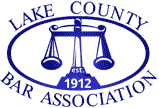Personalized Legal Services in Barrington & Schaumburg, IL
We speak English, Ukrainian and Russian languages
| Personal Injury |
Business Law |
Real Estate Law |
Wills, Trusts & Probate |
General Civil Litigation |
Elder Law |
The Murky Waters of Wetlands Protection
It has been over a year since a splintered United States Supreme Court issued a decision on the scope of the federal government's jurisdiction under the Clean Water Act to regulate wetlands. In that time, confusion has reigned as lower courts have interpreted the decision. The Act, now 35 years old, prohibits dumping certain pollutants into the "waters of the United States," which are defined as "navigable waters." Property owners of isolated wetlands have the "murky" task of determining whether their property is protected or not.
The question before the Court was whether wetlands into which fill material was deposited were "navigable waters." The Court set forth a confusing standard to guide the analysis. On the one hand, it said that the term "navigable waters" includes only relatively permanent, standing, or flowing bodies of water, not intermittent or ephemeral flows of water, and that only those wetlands with a continuous surface connection to such waters are covered by the Clean Water Act. At the same time, it said that wetlands may be protected by the Act if they have a "significant nexus" to navigable waters or could "affect the chemical, physical and biological integrity of other covered waters." Lower courts have been split as to which standard to apply.
In an effort to clarify, the Environmental Protection Agency and the U.S. Army Corps of Engineers have published a Guidance that identifies those waters over which the two agencies will assert jurisdiction categorically and on a case-by-case basis. (Go to www.epa.gov.) Essentially, the agencies have not picked one of the competing standards from the Supreme Court over another, but instead will use both of them.
There definitely will be assertion of Clean Water Act authority over wetlands that abut tributaries that come within the "relatively permanent" standard. This refers to tributaries that typically flow year-round or that have continuous flow at least seasonally. Wetlands adjacent to waters not fitting in the "relatively permanent" category will be assessed on a case-by-case basis, using the "significant nexus" test. Perhaps eager to make some kind of pronouncement that is unequivocal, the authors of the Guidance also state that Clean Water Act authority will not be stretched so far as to cover swales, gullies, and ditches that drain only uplands and do not carry a relatively permanent flow of water.
This website is not intended to constitute legal advice or the provision of legal services. By posting and/or maintaining the website and its contents, Lucas Law does not intend to solicit business from clients located in states or jurisdictions outside of Illinois wherein Lucas Law or its individual attorney(s) are not licensed or authorized to practice law.














